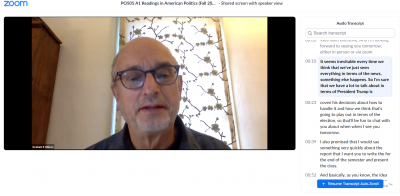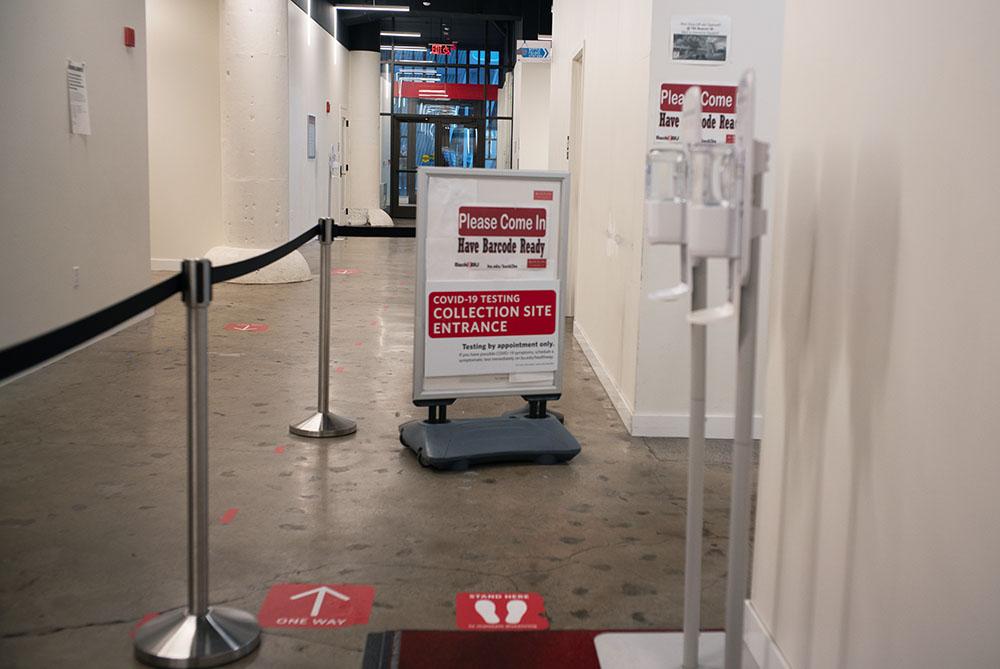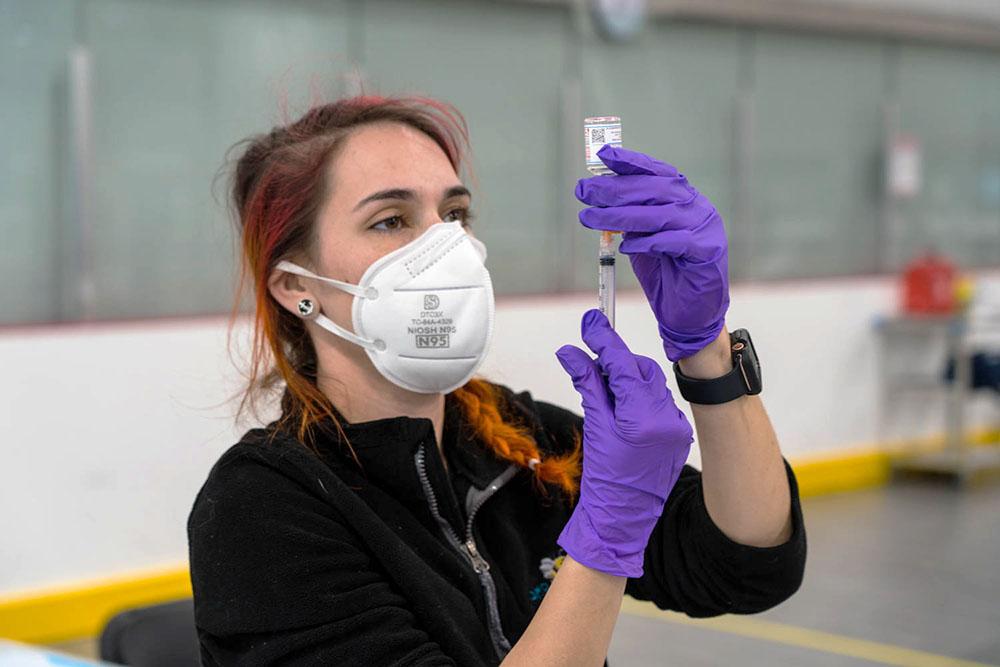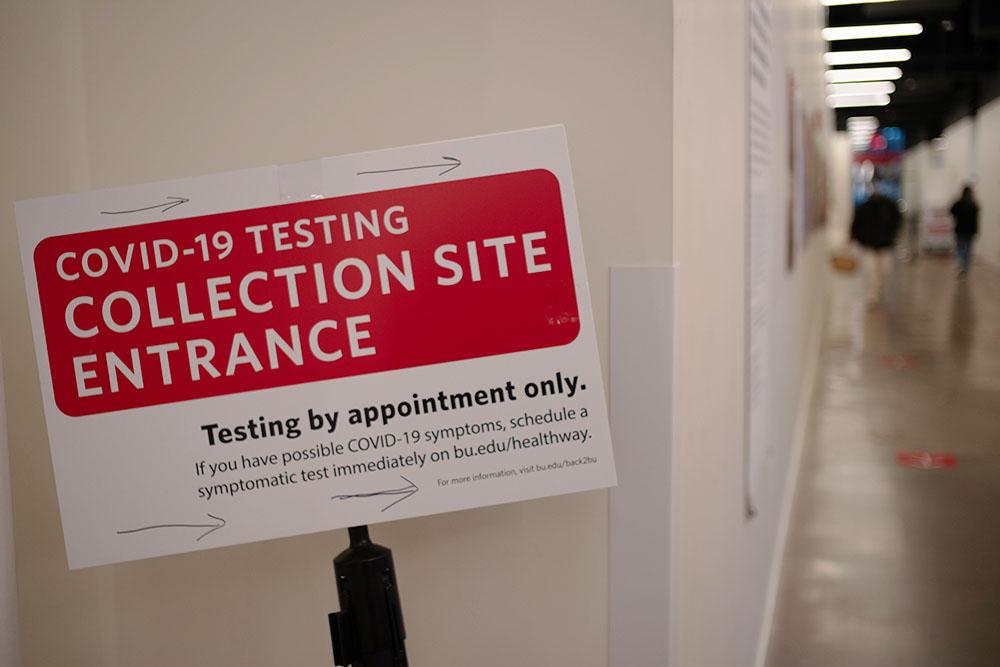
As students across the country navigate the learning curve that comes with adapting to remote learning, those who are deaf or hard of hearing must cross additional hurdles. Meanwhile, Boston University is doing what it can to support these students.
Disability and Access Services director Lorre Wolf said the University’s efforts since the pandemic constituted more of a small shift than a drastic change because it had already been offering virtual education opportunities.
“We were already set up to do remote accommodations because we support our distance education program and our global programs, which are remote,” Wolf said. “So we already knew how to do that, we just had to do it on a larger scale.”
Wolf said BU has been helping faculty better accommodate students by teaching more of them how to give extended exam time in Blackboard and add captions to visual media.
Communication is important when it comes to making online courses accessible to students, Wolf added. When a student requests captions, the program will insert them into the recorded lecture, and if a student needs an interpreter, the school will ensure one is present.
Wolf said Disability Services will have much to take away from this pandemic in terms of technology.
“This has been a moment when people have been able to realize that a lot of things are possible that used to be a knee jerk to say, ‘No, we can’t do it that way,’” Wolf said. “So I hope that that will continue when we’re past [COVID-19], and this momentum won’t be lost.”
Todd Czubek, a lecturer in the Deaf Studies program, said his classes take on a “universal design approach” so that they are not exclusive to deaf learners, but just as accessible to hearing students.
“There’s no way that we can provide access to all,” Czubek said. “Some people need the interpreter, some people need the digital ASL-based and then you have people who rely on [Communication Access Realtime Translation] services.”
CART services provide real-time live captioning nearly immediately. Zoom meeting hosts can incorporate these captions into their digital presentations.
Because all classes are remote, Czubek said much of his classroom difficulties lie in the logistics of a Zoom format. His students do not all fit on one page, so he has found it more difficult to build a class community.
To minimize eye strain for learners, Czubek said he added breaks to the three-hour class, during which he can check in on students. Czubek uses these breaks to make sure the lag time on Zoom isn’t hindering interpreters, as well as to figure out how to promote participation from both deaf and hearing students in discussions.
He said accessibility is important because it enables more people to engage with class material.
“If we can create environments where more people have access to the idea,” Czubek said, “we can leverage all the ideas and contributions that people make in ways that we maybe were never able to leverage before.”
Spotlighting, a feature on Zoom that allows certain participants to be the primary speakers — the only ones shown on the Zoom screen, has helped bridge access gaps, Czubek said. Through this feature, deaf and hard-of-hearing students can see a larger video of the ASL interpreter.
“On some silver-lining level, it does make us more sensitive to the access needs that we all have, and figuring out how to work it together, ” Czubek said. “It is sort of exposing and illuminating this idea that there are strategies that we can adopt that make access, for people who access the world differently, more equitable.”
Alana Smith, a deaf graduate student in the Wheelock College of Education and Human Development, is in Czubek’s class. Smith wrote through Zoom that she appreciates the effort and time professors are putting into a more accessible remote learning experience.
“His classes have opened my perspective even wider towards to deaf education,” Smith wrote. “He makes the classroom more fun and engaging. He made sure that each of us matters, making some funny jokes, etc.”
Smith added that at the beginning, it was frustrating having to take turns using the spotlight feature on Zoom.
“We would miss what [the] other person was saying since the professor hadn’t changed the spotlight,” Smith wrote. “Later, those professors picked up really quickly, making the ground rules clear, allowing us to have full access to communication.”
Although Smith wrote she was looking forward to observing classes at deaf schools near Boston — which is no longer possible during a pandemic — she has become accustomed to the new learning format.
“The professors in this Deaf Education program have thought of this LfA situation very carefully,” Smith wrote. “I think they have made the right decision to make the entire classes to be remote since it would cause so much more headache if it’s hybrid.”
Olivia Reinebach, a junior in the College of Communication who is hard of hearing, decided to take the semester off after struggling with screen fatigue from remote learning in the Spring.
“It’s just me looking up and down, looking at the captions, looking at the professor, looking at their presentation, looking at my notes,” Reinebach said. “It became a lot.”
Reinebach said she is unsure whether she will return next semester, either, because classes will remain in the Learn from Anywhere format. Face masks, she said, can hinder her ability to read lips.
“I do rely on lip reading, and things get harder when you’re six feet apart from someone,” Reinebach said. “Things get harder for me if I don’t know the person because I have to figure out their voice.”
Steve Jarvi, associate dean for Student Academic Life, said students looking to get an accommodation approved should seek out the Office of Disability and Access Services.
Jarvi said he is impressed with the way faculty and students have adapted to LfA.
“I think we should be proud as BU people for that,” Jarvi said.

























































































































Alana • Oct 8, 2020 at 2:13 pm
This is amazing yes!!!!! woohoooo